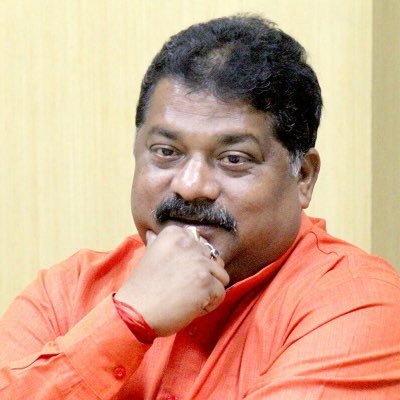There is, I think, a delicious irony in
the pastoral letter written by Thomas Macwan, Archbishop of Gandhinagar.
Writing at the time when the Gujarat legislative assembly elections are around
the corner, Archbishop Macwan in his pastoral letter of 21 November 2017 said,
“Nationalist forces are on the verge of taking over the country”. Unmindful of
the spirit in which the letter was written or the realities that affect the
various communities in India due to violent politics, one witnessed the usual
hue and cry in the media. Many commentators even questioned
the right of the Archbishop to express his views.
At this point, one might ask who these
‘nationalist forces’ are. Aren’t those who consider themselves Indians
‘nationalists’, one way or the other? Are we to conclude, then, that India
needs to be saved from its own people? Especially when a distinction is often
made between right-wing and secular nationalists, what could the rather ironic
remark by Archbishop Macwan indicate? The statement was made in the context of
political power and the way it influences the people in contemporary times.
Particularly, the statement hints at the use of nationalism to spread hate and
trample upon the rights of people. In this sense one can argue that Archbishop
Macwan was referring to those forces that use nationalism to create disorder in
society.
Speaking of the increasing attacks on
minoritized religious groups as well as the human rights violations against other
marginalized groups, Archbishop Macwan’s statement reveals that all is not well
within the nation. He observes, “We are aware that the secular fabric of our
country is at stake. Human rights are being violated. The constitutional rights
are being trampled. Not a single day goes without an attack on our churches,
church personnel, faithful or institutions. There is a growing sense of
insecurity among the minorities, OBCs, BCs, poor etc”.
Archbishop Macwan’s reference to
‘nationalist forces’ sans distinction perhaps hints at some fundamental aspects
of Indian nationalism and the manner in which the Indian identity was crafted,
chiefly through the freedom struggle. As I have written
in the past in this very column, Indian nationalism
and identity is based on Hindu majoritarian ideals and works towards maintaining
the power and privileges of savarna castes, mostly across religions. By not
making a distinction between the secular and right-wing nationalists, or
remaining non-committal on that distinction, Archbishop Macwan cut through the
politicking hullabaloo and simply pointed out that violence and marginalization
is routine for many in India.
But one can also think of the
Archbishop’s caution against excessive nationalism as emerging from a
nationalist understanding of India’s past and culture. In other words,
reproducing the very problems that the letter tries to tackle. The idea that
India was a well knit secular society is an old Nehruvian one. What this idea
does not take into consideration is the presence of the caste structure in
Indian society and the manner in which it obstructs the formation of an egalitarian,
let alone secular, society.
The banal violence and marginalization
stands starkly against the supposed ideological lines drawn between secular and
right-wing nationalisms in India. The recognition of the banality of violence
and marginalization in present times should also make us realize that there is
a long history to marginalization, including the time when secular, liberal
nationalism held sway in India. There cannot be a secular society if millions
within that society are subjected to discrimination and violence. As such,
Archbishop Macwan’s plea to safeguard the “secular fabric” of the country need
to be understood as requiring the creation of a secular society in the first
place.
The letter also confronts all those who
consider themselves as proud nationalists. Rather than play the usual blame
game where one type of nationalists (such as the secular liberal ones) blame
the other (right-wing) for all the ills in present times, Archbishop Macwan’s
letter demands introspection from all those who claim themselves to be
nationalists. It demands that they scrutinize the source of their nationalism,
identity, and pride.
The ironic remark in the Archbishop
Macwan’s letter should also be an occasion for us to realize that if there is a
growing insecurity amongst the ‘minority’ communities that prompts such
statements, it is not necessarily because such minority communities are
inward-looking and that they cannot look beyond their own selfish gains. It is
rather prompted by a very real experience of facing daily marginalization or
minoritization and observing how other communities too are subjected to similar
discrimination. We in Goa have observed how legitimate issues raised in a
church-run magazine were brushed aside by the whole
political establishment. The discussion of the Archbishop’s pastoral letters
seems to follow a similar script; the storm that is whipped up about the letter
diverts us from the pressing problems.
At the end of the day, the issue is not
whether nationalism works or not; it is rather the gap between the ideals of
nationalism (no matter what shade) and the reality that it ends up hiding. The
real challenge that confronts us is to bring the discussion back to the problems
faced by the multitude of minoritized and poor communities in India. In this
task one might profit much in heeding to the call for safeguarding the
constitutional values.
(First published in O Heraldo, dt: 6 December, 2017)







